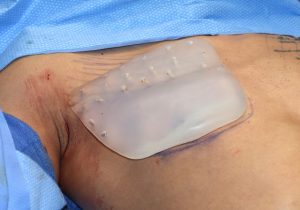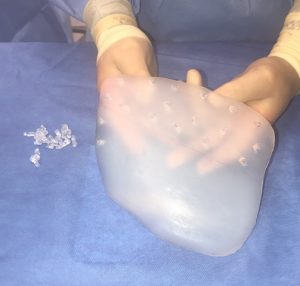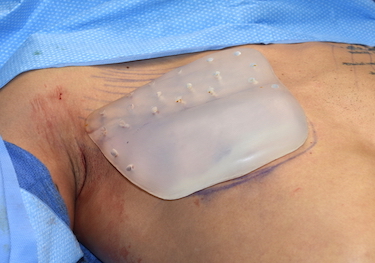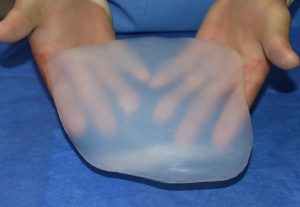Background: Poland’s syndrome is a well known congenital condition that causes lack of pectoral muscle development on one side. Other structures may be affected (ribs, upper extremity) but the one consistent feature is the underdevelopment of the pectoral muscle. This is the primary feature in which a male patient presents for aesthetic improvement.
In men the most common form of reconstruction for the missing lower part of the pectorals muscle is a solid soft silicone implant. Such an implant has to be made using a custom approach, most commonly from a moulage taken from the patient. Such a custom pectoral implant is inserted through a high axillary skin incision and positioned partly under the what muscle remains on the superior and in a completely thin subcutaneous pocket on the lower end.
Like any implant that is placed fairly superficial in the tissues, there is always a concern of fluid collections (seroma) in the short term and mobility/displacement long-term. Such concerns are magnified in younger thin men who have a very active lifestyle such as strenuous workouts.




Case Highlights:
1) Pectoral muscle/chest wall reconstruction in male Poland’s syndrome can be successfully done with a custom solid silicone implant.
2) In a very active young male Poland’s patient there is a short and long-term risk of seroma formation and implant displacement.
3) In this specific case the one year result remained stable and free of any fluid collections with stable implant positioning.





